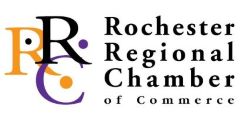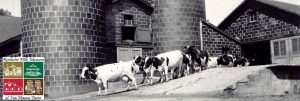Regional History
Historically, the Rochester region has thrived by being adaptable and recognizing the trends of the future. Its earliest settlers recognized the potential of the area’s thick woodland and ample waterways by building mills. Once a thriving farming community, the area formerly known as Avon Township recognized quickly the significance of the automobile, making room for small auto-parts factories and joining itself with Detroit’s soon-to-be booming economy. They recognized the importance of the growing railroad system, making sure that they were built near a train route and insuring their continued economic prosperity. Today that forethought continues, as the region is attempting to invite such high growth industries as nanotechnology and robotics to put down roots.
Thanks to this forward thinking, the Greater Rochester area, comprised of Rochester, Rochester Hills and Oakland Township, is one of the most successful communities in the United States. In fact, Money magazine ranked Rochester Hills 39th in its Top 100 “Best Places to Live.” With nationally recognized private and public education in all levels, performances and exhibits by top artists and musicians, and a 30 minute drive to Detroit, the Rochester area is quite compelling. In tandem with the miles of woodlands, prairies and marshes enveloping the area, the Rochester area makes for a compelling total package.
Rochester, Rochester Hills, and Oakland Township all recognize and appreciate their history. They use its lessons to propel them into the future- a future where these great communities are going to continue to expand, improve and develop beyond their founders’ wildest dreams.
When James Graham settled in the area now known as Rochester and Rochester Hills in 1817, it became the first settlement in Oakland County. Because of an abundance of trees and a close proximity to several rivers and creeks, early settlers knew what they needed to do to be successful. Both Rochester and nearby Stoney Creek Village, founded in 1823 by Elisha Taylor, built waterways which powered mills. These mills could cut lumber, grind grain, card wool and press cider.
For nearly a century, the Rochester area was comprised of large, self-sufficient family farms. The citizens of Rochester understood that small villages near transportation routes prospered. Wisely, they bought $50,000 in railroad stocks to ensure that the railroad went through Rochester. This established the village as a thriving rural market.
After 1900, farmers began to decrease their crops and flocks in order to make room for small auto parts factories. Many farmers left for the cities, and the resulting land boom brought many housing subdivisions and large estates for prosperous city workers. The remaining farmland was consolidated or turned into scientific farming operations, such as Dr. Sarah Van Hoosen Jones’ dairy and poultry farm. Van Hoosen, whose mother and aunt were two of the first women to graduate from the University of Michigan, bred prize-winning cattle desired throughout the world, further establishing Rochester n the public eye. In the 1950s, I-75 and M-59 were built, suburbanizing Rochester residents to travel to jobs further away.
The Rochester area still maintains several historic landmarks. Meadow Brook Hall, a globally renowned castle built in the 1920s and national historic landmark, offers guided tours to visitors, and Van Hoosen Farm now is home to The Rochester Hills Museum, containing permanent and temporary exhibits about the history of the community.

